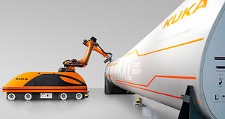PICOBOT® AND PICOBOT®L: THE PLUG & PLAY REVOLUTION FOR ABB GOFA TRANSFORMING COLLABORATIVE AUTOMATION
In the ever-evolving landscape of industrial automation, efficiency and adaptability have become essential pillars for success. Piab, a global leader in vacuum-based gripping solutions, has taken a significant step forward by offering its piCOBOT® and piCOBOT®L units in fully integrated versions for ABB’s GoFa collaborative robots. This development introduces true Plug & Play functionality, simplifying









